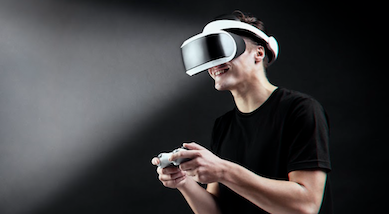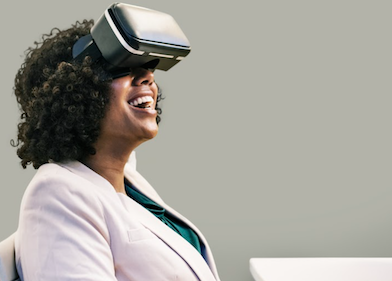Qualities You Need to Look For When Buying Your First VR Headset
Feb 15, 2022 00:57
There are several factors to bear in mind when choosing a virtual reality headset. These include the image resolution, the number of pixels per degree (PPD), the field of view, refresh rate, and position tracking. These terms will all be defined and explained below. While this is a technical subject, this is a very basic and simple guide to choosing your first VR headset. Enjoy!
Resolution
The resolution of the image is a key factor in choosing your first virtual reality headset. It is expressed in terms of how many pixels the VR headset can display. Pixels are the smallest displayable unit of an image, and they come together to form the whole picture. According to the team at vrbeginnersguide.com, the higher the resolution, the more crisp and real the image will appear, which helps the viewer to feel as if the VR is actually happening. Too low, and the viewer will experience pixelation or a blurred image.

PPD
Pixels per degree, PPD, is another measure of how sharp and clear the image will appear. PPD is how many pixels are visible per degree of the viewing angle. This essentially means the density of the image. The more detail that can be picked up, the more real the image appears, making the virtual reality experience all the better.
The goal of a VR headset would be to achieve retinal resolution; the point at which a human eye cannot pick up any more detail. However, realistically VR headsets will have varying reasonably high levels of PPD, and the higher the PPD, the more realistic and high-quality the image.
Field of View
The field of view measures the extent of the observable environment at any given time. The wider the field of view, the more impressive the VR experience. A good quality virtual reality headset will have a field of view between 100° and 110°.
Refresh Rate
This is how fast the virtual reality headset shows images in frames per second. The faster the refresh rate, the more smooth and fluid the VR experience will be. Slower refresh rates will result in choppier experiences and a less immersive virtual reality. Another downside of a low refresh rate is that it can cause motion sickness to the user. Generally, any refresh rate under 90 frames per second will result in these negative effects. The most advanced VR headsets currently have refresh rates of between 120 and 144 frames per second.
Position Tracking
The better the VR headset is at tracking your movements, the more immersive your experience will be. The two kinds of position tracking virtual reality headsets use are outside-in tracking (external) and inside-out tracking (internal).
Outside-in tracking is when the headset relies on external sensors for position tracking, while inside-out tracking uses an internal camera, inside the visor, to track movement. Outside-in tracking offers greater accuracy and flow, while inside-out tracking offers greater mobility, but can have accuracy and flow issues.
Use Available Online Advice
When in doubt about virtual reality headset options, it is always helpful to consult the experts. There are lots of websites that provide a ton of content about different uses of VR, product reviews, news, and more in-depth information. Now that you have learned the basic terminology, you can dive in and do your own research. With help from the experts, you can find the perfect VR headset for you.

Virtual Reality Is The Future
This innovative and fun technology is worth getting to know now, before it is everywhere. The possibilities virtual reality offers are endless. It could be that in five years, we are going on first dates from the comfort of our own homes, meeting instead of in a virtual reality restaurant, or else going on a VR summer holiday.
There are even practical applications for VR in education, such as showing children places they cannot physically go to, or in the workplace, for instance practicing giving a speech in front of a virtual audience, or giving a very dramatic, visual presentation.
As you have learned, there are several important factors in choosing your first virtual reality headset. If the resolution or PPD of the images aren’t high enough, the quality of the image will be grainy and weak, which massively reduces the sense of reality in your virtual experience. Your VR headset’s field of view will determine how immersive the experience is, while its refresh rate will dictate the flow of virtual reality. Finally, depending on which technology your device uses for its position tracking, you might have more mobility, or more accuracy and flow in your movements.
When in doubt, ask the experts and read the reviews online. Happy shopping!







































































